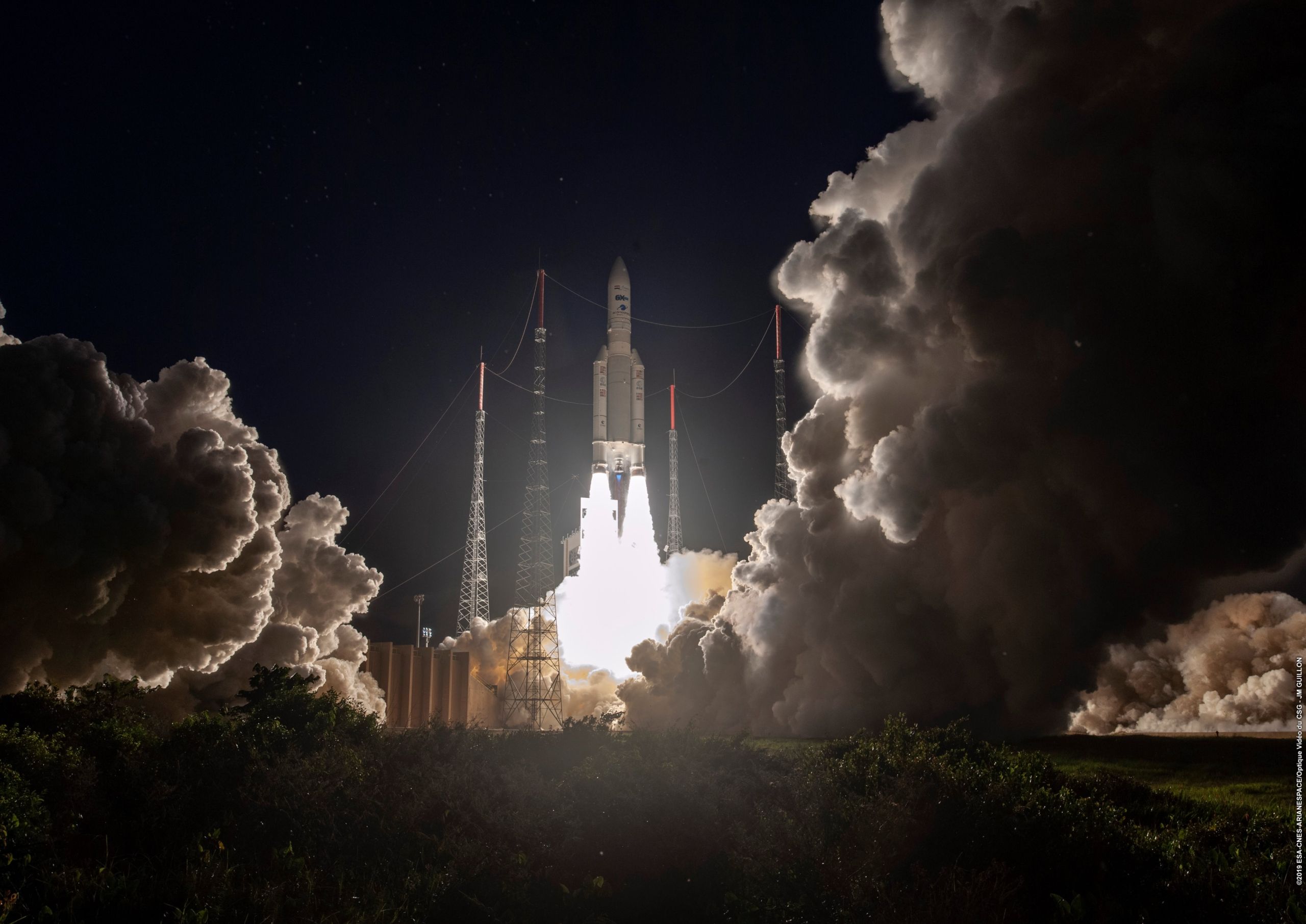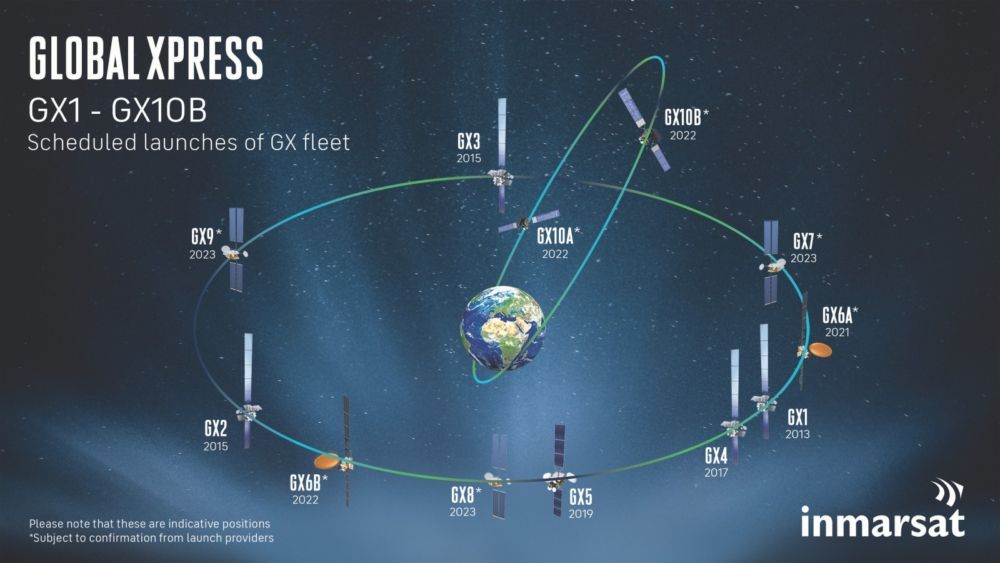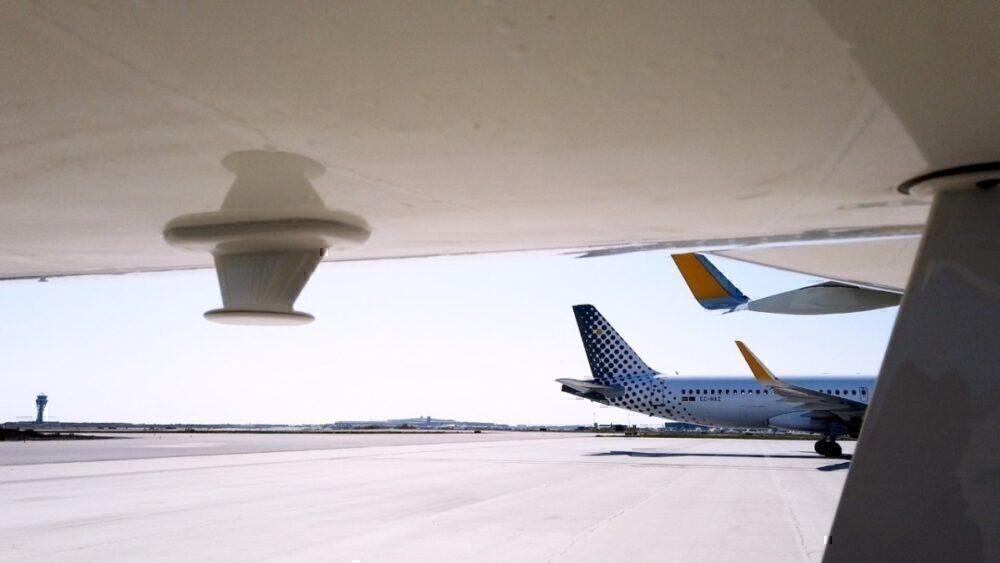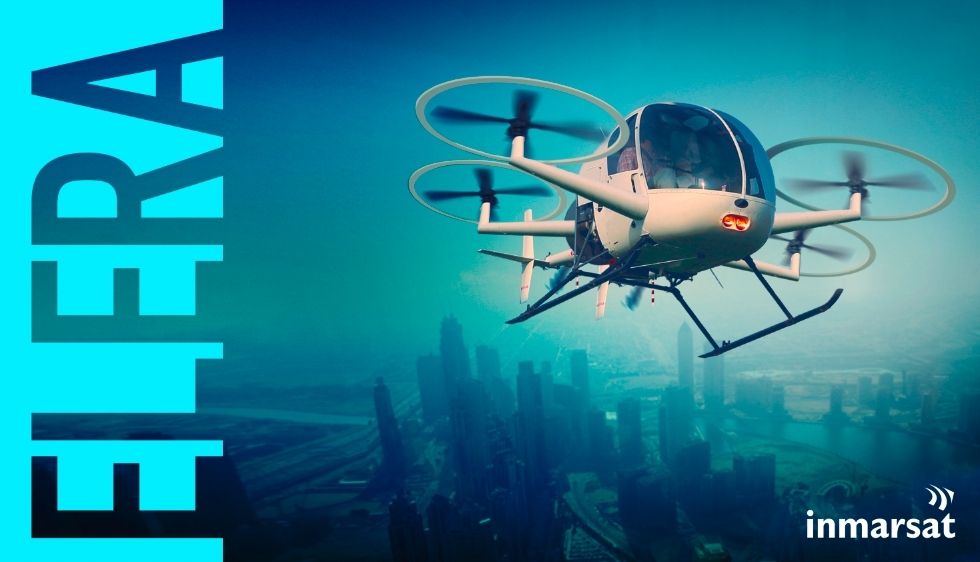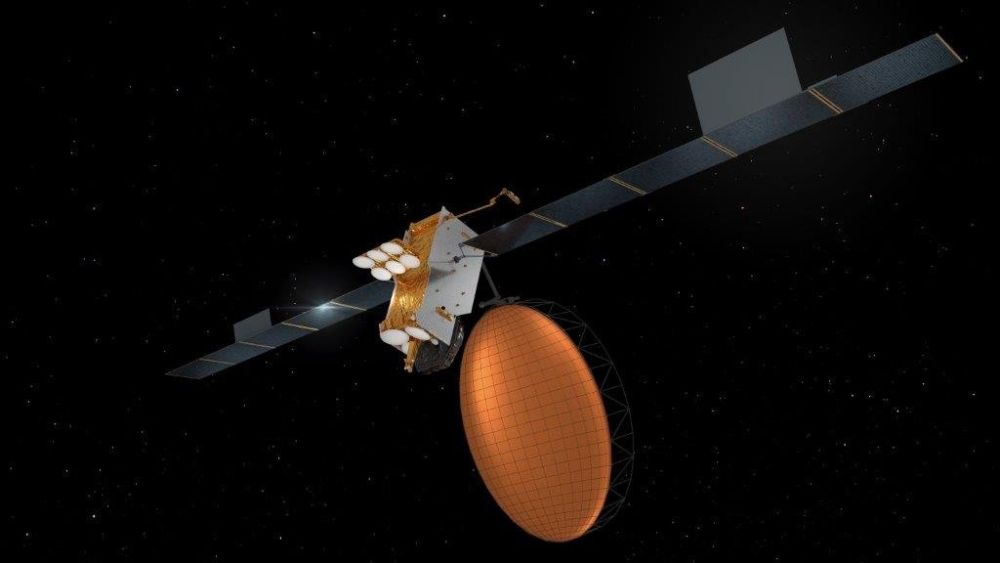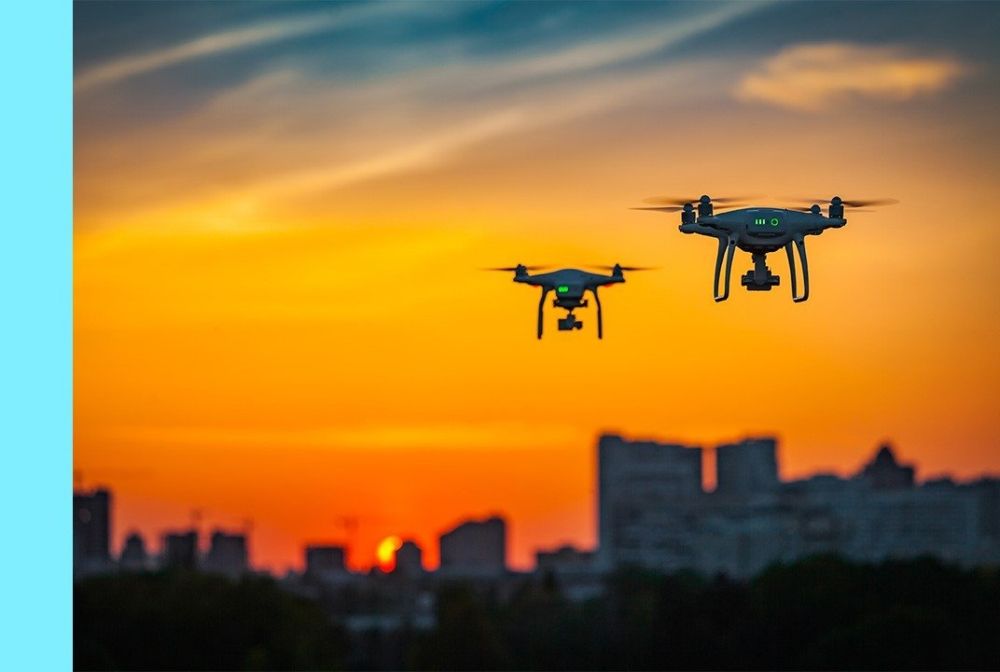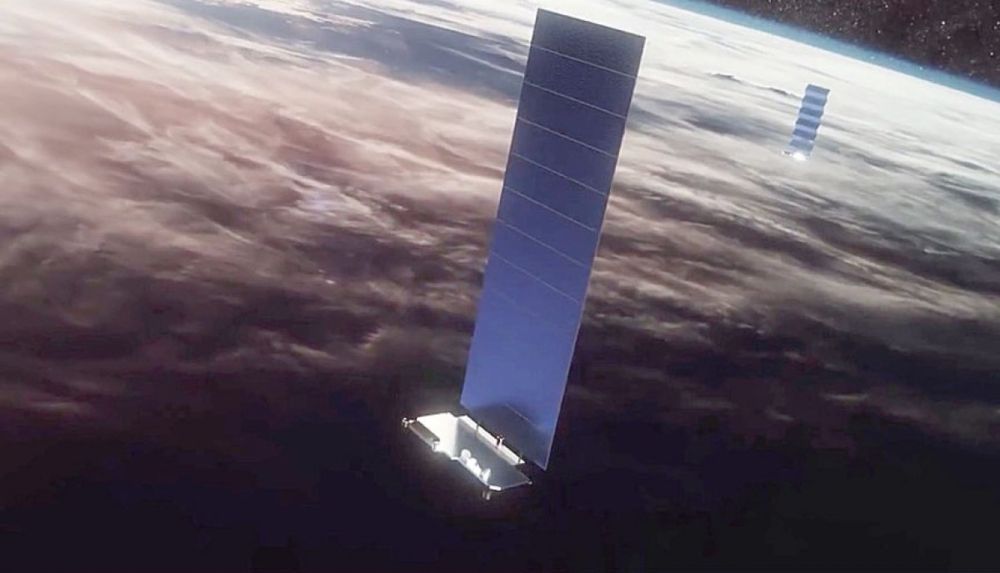Inmarsat has been shaking up the future connectivity market with the announcement of its multi-spectrum, multi-orbit ORCHESTRA network. Today, it announced another significant upgrade – ELERA – which will see a huge speed boost for its L-band network. Simple Flying caught up with Chief Technical Officer at Inmarsat, Peter Hadinger, to get under the skin of these ambitious projects.
Global and reliable
The announcement of Inmarsat’s next-generation network brings together all the things the firm has been doing so well for many years, and adds more layers to its connectivity options. Its existing Global Xpress (GX) network will harmonize with its L-band network, and then low-Earth orbit (LEO) and terrestrial coverage will be added into the mix.
Chief Technical Officer at Inmarsat, Peter Hadinger, spoke to Simple Flying about the impetus behind ORCHESTRA. He explained,
“The focus for us has always been to start with global coverage, which is what we do with each generation of our systems, and to do that in a reliable way. So, we end up with resilient spacecraft and ground networks and so forth because our systems are trusted as part of critical infrastructure. We then to begin to fill in that with additional capacity to deal with the hotspots.”
These hotspots are not everywhere. Indeed, as Peter pointed out, most of the world is pretty empty of airplanes, while certain areas are always rife with activity. An example of this is the Heathrow stacks, where multiple planeloads of passengers will be trying to access their data connections all at the same time.
One answer to this would be to launch a satellite just to deal with these hotspots, but that would be incredibly costly. So, too, would be adding a LEO layer just to deal with that hotspot. Inmarsat’s approach is to take all of these technologies and to allow them to work together, with each element doing what it does best.
Incremental benefits
The approach Inmarsat has taken with ORCHESTRA means there will be incremental benefits to be gained as each phase is deployed. Every layer of LEO, every terrestrial connection and each new GEO satellite deployed will increase the capabilities of ORCHESTRA another notch. The company and its customers do not have to wait for the entire project to be finalized before they start to benefit from the technology.
Even more interestingly, by adding capacity to these hotspots, Inmarsat is effectively taking away demand from other oversubscribed services in that area, as Hadinger explained,
“Even as we introduce these terrestrial technologies for the people who begin to adopt them, the world gets better for everyone. Because what we're doing is we're essentially taking some of that demand out of the hotspot, moving it onto these other networks, which means that it frees up capacity for everyone else in the network.”
For the passenger, the change will be seamless. That passenger sitting in a Heathrow stack or flying a busy travel corridor will not know whether they are receiving L-band, Ku-band, LEO or terrestrial data. All they will know is that they have a fast and reliable connection throughout their journey.
Small and inexpensive
While ORCHESTRA will require some hardware additions for users to truly benefit from the technology, Inmarsat has worked hard to ensure it’s not an arduous process to upgrade. Time on ground will be minimal, and the next generation terminal will be small and lightweight.
Most importantly, the upgrade will be cost-competitive. The company has learned a lot from its experience in the European Aviation Network (EAN), a solution that utilized both terrestrial and satellite connectivity. Tailoring its solution to those airlines that demand great value, low drag, lightweight products will ensure global appeal for the upgrade.
Introducing ELERA
Following Inmarsat’s announcement of ORCHESTRA just a couple of weeks ago, today saw another exciting reveal by the company. The firm has planned a significant upgrade of its L-band services, to bring to the market a product it is calling ELERA.
The narrowband network will see speeds boosted up to 1.7 Mbps, around four times its existing capacity. The new spectrum management capabilities (known as Carrier Aggregation) will set this L-band network far ahead of competitors in the space, opening the door to innovation in the Internet of Things (IoT) space.
To support the ELERA network, Inmarsat will launch two new satellites. The I-6 satellites are the largest and most sophisticated commercial communications vessels ever built, and the first will launch at the end of this year.
The applications for this type of technology upgrade are endless, from hosting black box data in the cloud to receiving real-time updates on aircraft performance and maintenance requirements. There are infinite possibilities for improving the performance of multiple non-aviation applications, as well as one key area that is desperately in need of a good, reliable solution – Unmanned Aerial Vehicles, or UAVs. Peter commented,
“Flying in regulated airspace becomes a real challenge when you have an un-piloted aircraft, at least not one that's not piloted in person. Having super redundant links to that is absolutely essential. You don't want something that's uncontrolled, just kind of doing its own thing up there.
“You need to have continuous connectivity to be aware of your surroundings, and also to make sure that you have positive control. For us, the coming future of mixed travel between airlines and UAVs sharing airspace really demands a whole new level of sophistication in this communications infrastructure. ELERA is really about making sure that we can deliver super reliable, safety rated kinds of communication.”
Entering the LEO space
Despite adding LEO capabilities to its network, Inmarsat is not looking to compete with the likes of SpaceX or OneWeb. Hadinger explained,
“We're trying to do the best for mobility here and not just trying to get everything to fit into the bucket that we have … For us, it's much more about starting with the problem, which is the mobility problem, which is a very, very different problem than the fixed consumer broadband problem or any other. And because of that, we end up with solutions, which are both global and highly reliable, which is one of the most important factors for anything that deals with aviation.”
Crucially important here is the fact that Inmarsat’s LEO fleet, however large or small it may end up being, will be deployed solely for the purpose of mobility communication. Where SpaceX and other players will be dividing their bandwidth among homes and businesses on the ground, Inmarsat will provide this extra capacity just for the benefit of maritime and aviation industries specifically.
The LEO addition is seen as a solution where other options are limited. A busy transatlantic corridor, for example, would not be reached by any terrestrial connectivity, but could benefit from a little extra capacity from these low-Earth satellites. Hadinger commented,
“If your hotspot happens to be on a route, for example, across the Atlantic or across the Pacific, that's where you need to have the extension of this sort of terrestrial coverage into that area. And LEO provides, essentially, that bounce that allows you to reach further than a terrestrial link would into these areas. And that then gives us a high bandwidth, high performance connection into those that does exactly the same thing.”
Hadinger also explained that the next generation terminals being developed for the ORCHESTRA era of connectivity will not only be able to talk to all varieties of satellite and terrestrial terminals, but also from aircraft to aircraft. This bouncing of the signal in a sort-of aerial relay will mean there is layer over layer of redundancy in the network, so if one stream is busy or over capacity, another can be picked up, giving everyone the best connection all the time.
This article is brought to you by Simple Flying Connectivity, a category on Simple Flying dedicated to inflight connectivity. Click here to read all of our inflight connectivity content.

